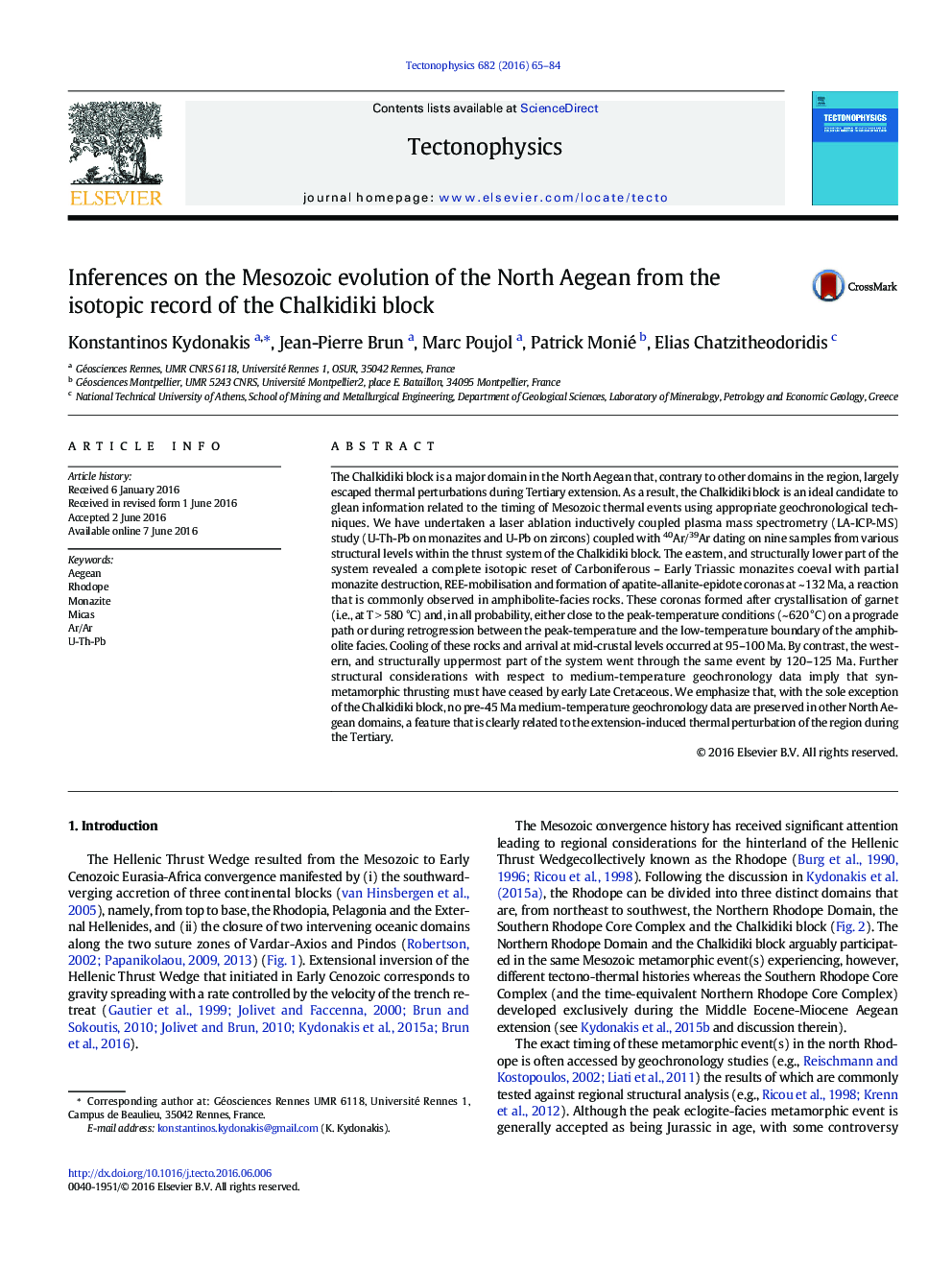| کد مقاله | کد نشریه | سال انتشار | مقاله انگلیسی | نسخه تمام متن |
|---|---|---|---|---|
| 4691304 | 1636716 | 2016 | 20 صفحه PDF | دانلود رایگان |
• We present new geochronology data from the southwestern part of the Rhodope.
• The study area (Chalkidiki block) retains a rather rich Cretaceous isotopic record.
• Monazite breakdown at ~ 132 Ma provides a minimum age for the amphibolite-facies event.
• Amphibolite-facies overprint predates the end of thrusting in the area.
• Cooling and arrival at shallow crustal levels occurred by the end of Early Cretaceous.
The Chalkidiki block is a major domain in the North Aegean that, contrary to other domains in the region, largely escaped thermal perturbations during Tertiary extension. As a result, the Chalkidiki block is an ideal candidate to glean information related to the timing of Mesozoic thermal events using appropriate geochronological techniques. We have undertaken a laser ablation inductively coupled plasma mass spectrometry (LA-ICP-MS) study (U-Th-Pb on monazites and U-Pb on zircons) coupled with 40Ar/39Ar dating on nine samples from various structural levels within the thrust system of the Chalkidiki block. The eastern, and structurally lower part of the system revealed a complete isotopic reset of Carboniferous – Early Triassic monazites coeval with partial monazite destruction, REE-mobilisation and formation of apatite-allanite-epidote coronas at ~ 132 Ma, a reaction that is commonly observed in amphibolite-facies rocks. These coronas formed after crystallisation of garnet (i.e., at T > 580 °C) and, in all probability, either close to the peak-temperature conditions (~ 620 °C) on a prograde path or during retrogression between the peak-temperature and the low-temperature boundary of the amphibolite facies. Cooling of these rocks and arrival at mid-crustal levels occurred at 95–100 Ma. By contrast, the western, and structurally uppermost part of the system went through the same event by 120–125 Ma. Further structural considerations with respect to medium-temperature geochronology data imply that syn-metamorphic thrusting must have ceased by early Late Cretaceous. We emphasize that, with the sole exception of the Chalkidiki block, no pre-45 Ma medium-temperature geochronology data are preserved in other North Aegean domains, a feature that is clearly related to the extension-induced thermal perturbation of the region during the Tertiary.
Journal: Tectonophysics - Volume 682, 6 July 2016, Pages 65–84
